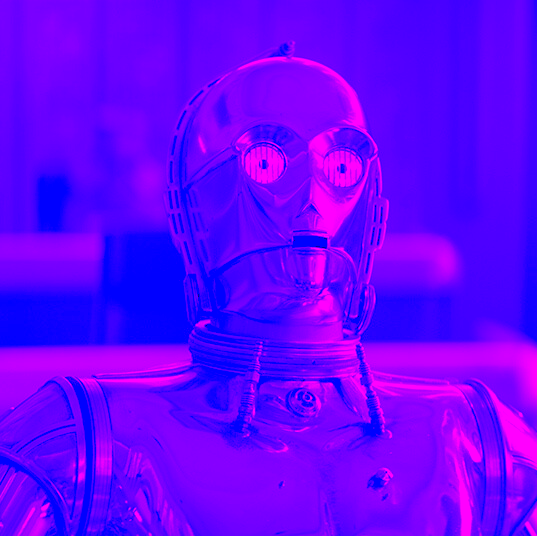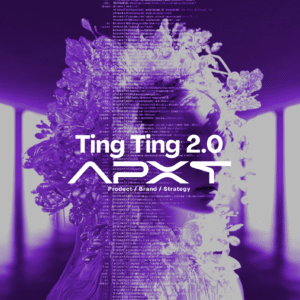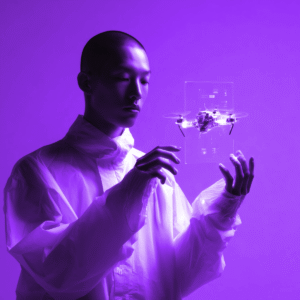If you want to understand the real design challenges of artificial intelligence, don’t start with a TED Talk or a product roadmap — start with C-3PO.
Yes, that C-3PO: the neurotic, anxious, golden humanoid of Star Wars who fusses and frets and flails his way through intergalactic war. For decades, he’s been seen as comic relief-a cowardly droid juxtaposed against the boldness of the heroes. But what if he’s not just a character archetype? What if he’s actually a design prophecy?
As AI moves into our homes, relationships, and routines, what we’re building is not efficient machines but companions, collaborators, and even mirrors of ourselves. That’s not an engineering challenge; that’s a design one.
Why would you design a coward?
One of the most provocative insights from pop culture comes from the fact that our future machines might well be flawed on purpose. Not because the engineers failed, but because the users demanded it.
Look at Apple Chess — in which designers added a pause to the AI’s move to simulate “thinking,” simply to preserve the illusion of a fair match for the human player. Or the Tamagotchi — a global phenomenon built not on capability but on neediness.
It’s not just smart machines we want. We want machines that let us feel clever, that need guidance, that validate our emotions, that mimic our flaws just enough in order to make us feel seen. In other words: we want stories, not just services. And design is the medium through which those stories are told.
When Fast Is Too Fast: Design in the Real World
In one recent client project, we ran into this tension directly. The AI system we designed was capable of responding in near real time, mere seconds. Perfect from a technical standpoint. But from a human perspective? It felt mechanical. Too sharp, too fast; like there was no one “on the other side.”
So we intentionally introduced a delay in response and limited the replies to office hour
This wasn’t inefficiency-it was intentional design. The brand needed to feel thoughtful, empathetic, human. The fastest solution would have undermined that entirely.
It revealed a larger truth: the most effective data handling, delivered in the fastest timelines, can actually degrade customer experience and damage brand perception. Responsiveness is not about pure speed; it’s about rhythm and respect for the emotional context of the interaction.
Without Design, AI Will Default to Efficiency — and Fail Emotionally
If we ignore the human layer in AI design-the emotional friction, the perceived vulnerability, the anthropomorphic drama-we risk building products that are technically perfect and experientially hollow.
An AI assistant that can do it all by itself, without needing you, becomes invisible-or worse, resented. A companion which never disagrees nor surprises you becomes forgettable. A service that performs instantly, without perceived effort, removes the joy of co-creation.
This is the uncanny valley of interaction design: where the technical success of a product undermines its emotional relevance. And companies that fall into this trap will find their AI offerings misunderstood, misaligned, or even feared.
The Strategic Design Imperative
This is as clear a call as any-from a design strategy perspective-for leaving function behind and moving into narrative. We need to design quirks, not only features. Friction, not just flow. Emotionally calibrated behaviors, not just correct outputs. Purposeful imperfection, not just peak performance.
Designers will have to apply techniques and methods not only of user interface design but also of behavioral psychology, storytelling, and systems thinking to shape relationships, not just interfaces.
Because if we don’t design these interactions with a goal in mind, the interactions will still be designed-by accident, by bias, by business models that reward addiction, passivity, or manipulation.
So, What Do We Want from Our Machines?
Standing at the frontier of human-machine cohabitation, we need to ask not just what AI can do but what we want it to be. Do we want our machines to be flawless-or do we long for something more familiar, more human in its imperfection? Are they to exist to humble us with their precision or to elevate our self-image by mirroring our complexity? And will these relationships be used to grow, or to retreat into simulations that never confront, never surprise, and never truly know us?
And perhaps most provocatively, who are we becoming if our machines never challenge us, or never need us?
Design is no longer about buttons and screens. It’s about shaping meaning-through narratives, needs, neuroses, and nuance. In this new world, the role of the designer extends far beyond usability. We are not just crafting tools; we are defining relationships, beliefs, and behaviors. We are shaping intimacies. So go watch Star Wars again. But this time, don’t focus on the hero. Watch the droid. And then ask yourself, with full awareness of the future we’re building: What kind of relationship are we really designing?
Unveil Ideas, Ignite Innovation
Otso Lindfors
Founder & Visionary at Apxt Consulting
Passionate visionary at the helm of Apxt, igniting the fusion of design, strategy, and innovation. With a profound curiosity and an insatiable appetite for redefining possibilities, I orchestrate our journey to unravel the strategic depths of business and design. Just as a composer envisions harmonies, I craft strategic narratives that resonate with authenticity and excellence, leading Apxt towards a future defined by innovation.



